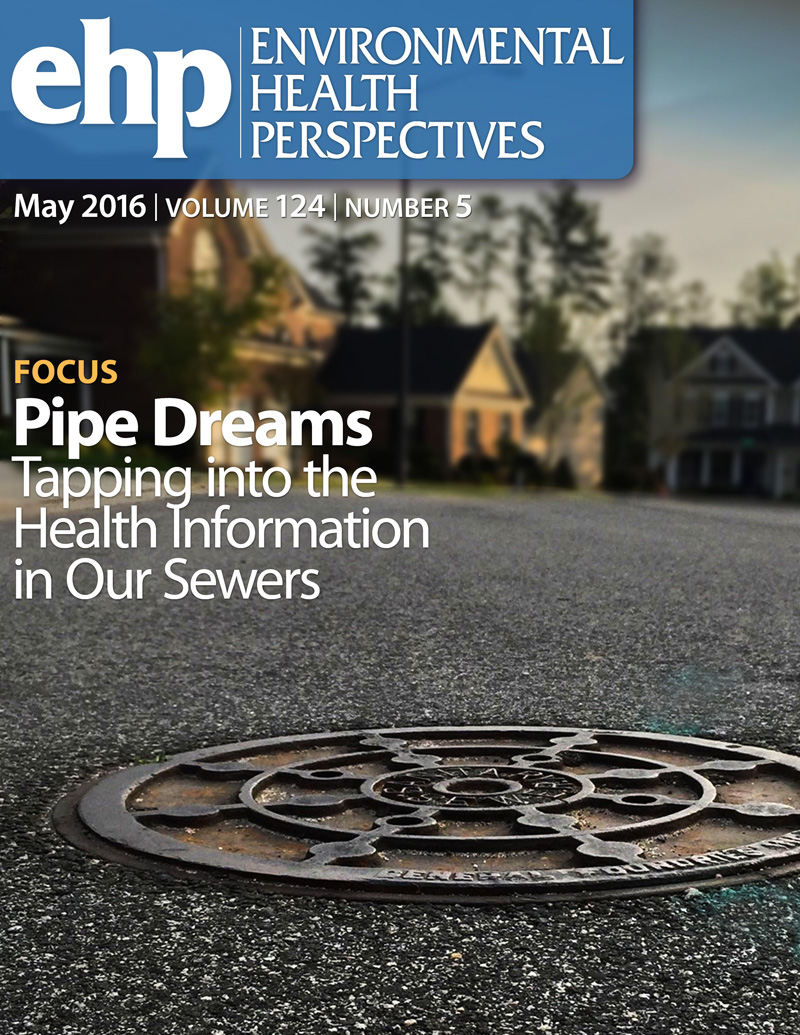具有连续曲线和暴露误差校正的因果浓度-反应模型:PM2.5和医疗保险队列中的死亡率。
IF 9.8
1区 环境科学与生态学
Q1 ENVIRONMENTAL SCIENCES
引用次数: 0
摘要
背景:许多研究报告了PM2.5与死亡率的关联,但在低浓度下的研究较少,使用因果模型或校正暴露误差偏差的研究更少。没有人纠正监测地点的不代表性。目的:我们在控制NO2和O3以及标准混杂因素的情况下,结合因果模型、灵活的浓度-反应模型和暴露误差的偏倚校正,研究了PM2.5与医保队列中全因死亡率的关系。方法使用未用于拟合PM2.5模型的监测仪,我们拟合了美国按季节、地区和海拔分层的72个回归校准模型。我们对校准后的PM2.5拟合了4个自由度的b样条,并使用梯度增强方法对每个样条分量拟合了单独的广义倾向评分模型。我们还使用逆概率权重来解释监测位置的非代表性。我们使用广义倾向得分和b样条,拟泊松模型拟合了按种族、医疗补助状况和性别分层的每个邮政编码年的死亡人数。单独的模型适用于被认为是黑人和白人的参与者,以及贫困率较高和较低的邮政编码。我们使用原始曝光拟合模型来估计曝光误差偏差的程度。结果倾向得分分析取得了较好的协变量平衡。控制倾向得分,我们发现浓度-反应曲线没有阈值证据,其置信区间不包括4 μg/m3及以上的零值。美国EPA现行标准9 μg/m3与WHO指南5 μg/m3的随访时间为223,666,531人年,随访率比为1.088 (95% CI 1.064, 1.113)。使用原始暴露,发生率比为1.076 (95% CI 1.070,1.083)。因此,影响继续低于EPA标准,校准后的影响估计高出16%。在被认为是黑人的参与者中,8 μg/m3以上的影响更大。空气污染与死亡率之间的浓度-反应曲线在对暴露误差进行调整并使用因果模型后仍然存在,并且浓度继续低于目前的美国环保署和欧盟标准,甚至低于世卫组织指南。在低浓度下,原始曝光的曝光误差导致明显的向下偏差。被认为是黑人的人更容易受到影响。https://doi.org/10.1289/EHP15238。本文章由计算机程序翻译,如有差异,请以英文原文为准。
Causal Concentration-Response Modeling with Continuous Curves and Exposure Error Correction: PM2.5 and Mortality in the Medicare Cohort.
BACKGROUND
Many studies have reported associations of PM2.5 with mortality, but fewer at low concentrations, and even fewer using causal modeling or correcting for exposure error bias. None have corrected for the non-representativeness of monitoring locations.
OBJECTIVES
We examined the association of PM2.5 with all-cause mortality in the Medicare cohort using a combination of causal modeling, flexible concentration-response modeling, and bias correction for exposure error, while controlling for NO2 and O3 as well as standard confounders.
METHODS
Using monitors not used to fit our PM2.5 model we fitted 72 regression calibration models stratified by season, region, and elevation in the US. We fitted a B-spline with 4 degrees of freedom to the calibrated PM2.5 and fitted separate generalized propensity score models for each spline component using gradient boosting. We also used inverse probability weights to account for the non-representativeness of monitoring locations. Using the generalized propensity scores and the B-splines, we fitted quasi-Poisson models to counts of deaths in each ZIP code-year stratified by race, Medicaid status, and gender. Separate models were fit for participants identifying as Black and as White, and for ZIP codes with higher and lower poverty rates. We fit a model using the original exposure to estimate the extent of exposure error bias.
RESULTS
The propensity score analysis achieved good balance for all covariates. Controlling for the propensity scores, we found a concentration-response curve with no evidence of a threshold, and whose confidence interval did not include the null from 4 μg/m3 and upward. There were 223,666,531 person-years of follow-up between the current US EPA standard of 9 μg/m3 and the WHO guideline of 5 μg/m3, and the rate ratio between them was 1.088 (95% CI 1.064, 1.113). Using the original exposure, the rate ratio was 1.076 (95% CI 1.070,1.083). Hence, effects continue below the EPA standard and calibrated estimates of effect were 16% higher. Effects were larger from 8 μg/m3 among participants identifying as Black.
DISCUSSION
The concentration-response curve between air pollution and mortality remains after adjustment for exposure error and using causal models and continues to concentrations below current US EPA and EU standards, and even below WHO guidelines. Exposure error in the original exposure resulted in noticeable downward bias at low concentrations. Persons identifying as Black are more susceptible. https://doi.org/10.1289/EHP15238.
求助全文
通过发布文献求助,成功后即可免费获取论文全文。
去求助
来源期刊

Environmental Health Perspectives
环境科学-公共卫生、环境卫生与职业卫生
CiteScore
14.40
自引率
2.90%
发文量
388
审稿时长
6 months
期刊介绍:
Environmental Health Perspectives (EHP) is a monthly peer-reviewed journal supported by the National Institute of Environmental Health Sciences, part of the National Institutes of Health under the U.S. Department of Health and Human Services. Its mission is to facilitate discussions on the connections between the environment and human health by publishing top-notch research and news. EHP ranks third in Public, Environmental, and Occupational Health, fourth in Toxicology, and fifth in Environmental Sciences.
 求助内容:
求助内容: 应助结果提醒方式:
应助结果提醒方式:


